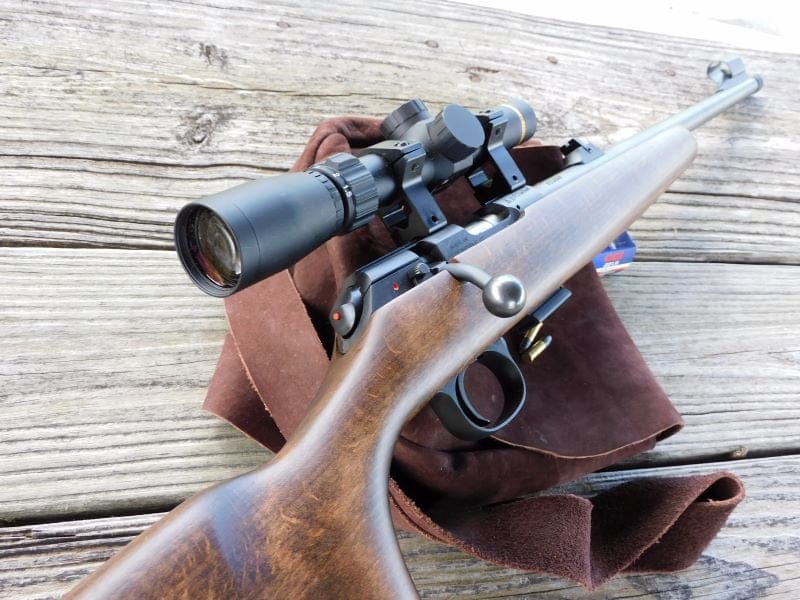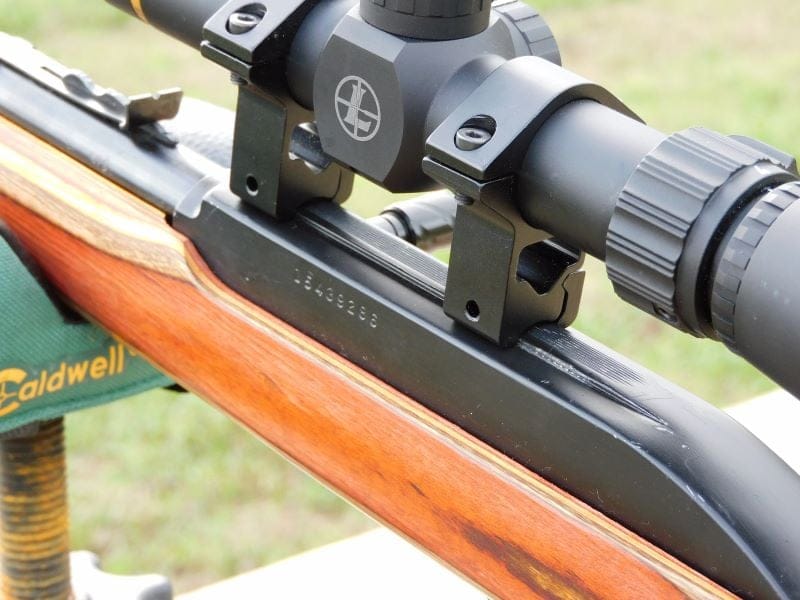A good optic is close to the be-all and end-all if you are looking to get precision out of your rifle. That does not change whether it’s the old .22 rifle you keep for pests or the deer rifle on the rack. There are plenty of scopes to choose from and some are made for a specific cartridge. BDC scopes have reticles that measure the theoretical drop of a round, which makes getting the proper elevation on the target that much easier. Other scopes are made for particular rifles, like LPVOs for AR-15s.
One of the original specialty scopes is the rimfire scope. Rimfire scopes are made specifically for rimfire rifles like that old .22. But what are the differences between a rimfire scope and a regular rifle scope? Why choose one over the other and can you use a rimfire scope on a higher-powered rifle? Let us explore the world of rimfire scopes and see how they stack up to traditional riflescopes.

Rimfire Scopes and Rimfire Mounts: A Primer
Until recently, rimfire scope design was linked with the most popular rimfire rifles out there–those chambered in the .22 LR cartridge. .22 rifles tended to be lightweight and dimensionally smaller than centerfire rifles. The low-pressure .22 round does not require nearly as much metal to safely shoot, and many .22 rifles out there tend to be geared toward smaller-statured shooters. Given that the .22 LR is a shorter-range cartridge, many early .22 rifles came with no provisions for a rail. If you wanted a scope, it was a gunsmith’s job to drill and tap to fit the appropriate mount.

In short order, manufacturers began producing rifles with a milled groove on the receiver for a scope mount. These included rifles like the Belgian-made Browning SA-22 and the American Marlin Model 60. Manufacturers soon standardized on the 3/8-inch rail, which is by far the most common arrangement you will find now.

Rimfire Scopes: The Good and the Bad
Rimfire scopes have come a long way since the Model J. The use of nitrogen in manufacturing has given us scopes that do not fog in humid conditions and the thin tube scopes of yesteryear have given way to more open objectives that let in more light and have a wider field of view. Many rimfire scopes come with mounts right out of the box. 4x rimfire scopes are bog standard and adjustable 2-7x scopes might be the sweet spot. Higher magnifications are available if you are willing to look.

Although adult-sized rifles with full-length stocks are now available, rimfire scopes are still lightly built compared to conventional rifle scopes. This harkens back to the lines of most .22 rifles and at what distance they are generally used. A heavily built scope with lots of magnification was just unnecessary. But that is not sufficient. Shooters want more magnification, more light, and more features, and they are not necessarily toting around a rifle chambered in .22 LR anymore.
With a 50-yard zero, the .22 LR drops a few inches at 100 yards. At 200 yards, it has the trajectory of a thrown rock. While the .22 LR is the most common rimfire out there, the .22 Magnum, .17 HMR, and .17 Super Magnum make killing small game out to 200+ yards child’s play.
Rimfire scopes also tend to be less expensive than regular rifle scopes due to their construction. Some brands like Tasco, BSA, and TruGlo produce optics with polymer tubes because it is cheaper to make and can stand up to minuscule rimfire recoil okay. Better-known brands that also produce centerfire rifle scopes such as Vortex and Leupold, have rimfire offerings that are marginally less expensive but come with many of the same features.
Rimfire Scopes on a Rimfire Rifle
Rimfire scopes make some sense to put on a rimfire rifle. A quality rimfire scope like the Vortex Diamondback is just as clear and fog-free as any centerfire rifle scope and the lighter weight and generally trim objectives keep the weight and bulk of the rifle down but you gain all the advantages of an optic. Some rimfire scopes are specifically set up to compensate for the ballistic drop of rimfire rounds like .22 LR, .22 Magnum, or .17 HMR.
But most rimfire scopes are made to have a fixed parallax set at 50 yards. Practically speaking, parallax is the visual phenomenon in which the scope reticle and the target are in the same sighting plane so you will not lose the reticle on the target if you move your head around to find it in the scope. Where parallax is set also gives you maximum clarity at that distance.

Unfortunately, 50 yards is an easy shot with most rimfire rounds and it is fixed so you cannot adjust it. If you want more magnification and additional features like an illuminated reticle and an adjustable parallax, you would be best served by using a conventional rifle scope mounted in 3/8-inch mounts. Some rifles, like the Ruger 10/22, come with Weaver or Picatinny rail mounts to use a conventional rifle scope and conventional mounts from the get-go.
Rimfire Scopes on a Centerfire Rifle
If you favor a light optic or you can’t find a suitable optic in your price range, it can be tempting to mount a rimfire scope. I have tried this for science on occasion. I would say it is possible to mount some rimfire scopes to some centerfire rifles in a pinch. You can pair a quality rimfire scope with a lighter recoiling centerfire round like the .223 Remington and probably get by. But by the time you get to a good rimfire scope, you are out the same amount of money as you would be with a small optic built to the task. But if push came to shove, the likes of Vortex, Leupold, and Burris will probably suffice. However, given the aforementioned issues regarding magnification and parallax, your ability to shoot at a distance can be limited.
If you think you can get by with a cheap $50 scope on your $800 deer rifle, think again. I’ve had the opportunity to try a TruGlo and Tasco 4x rimfire scope on one of my deer rifles chambered in .270 Winchester. Problems came up sooner rather than later.
I am not bashing these brands or their optics. Both make good rimfire scopes and I have taken game using them…on a .22. But the lower you go in price, the more corners are cut and the more lightly built the optics become and I am not just talking about weight. After 30 rounds fired downrange, the reticle on the TruGlo scope snapped out of view of the lenses. The Tasco had an aluminum body and is an overall solid .22 optic. It did not break, but it seemed to lose zero after every group was printed.
Parting Shots
Rimfire scopes and traditional rifle scopes have their respective strengths and weaknesses. A decent rimfire scope is an investment that will increase the capability of your rifle. These scopes tend to have a smaller footprint that conforms to the lightweight of most rimfire rifles out there and magnifying power that is wholly appropriate at the limited ranges most rimfires will be deployed. There are even a few that are calibrated to your cartridge of choice, just like its bigger brothers that you might mount to a centerfire rifle.
While it might be tempting to mount a rimfire scope on a centerfire rifle in some circumstances, reliability goes out the window as even the best rimfire scopes are engineered for nonexistent recoil and muzzle rise that is simply not there with centerfire rifles.
While traditional rifle scopes are not the perfect solution for rimfires, they represent the best-around fix for both rimfire and centerfire guns. Many rimfire guns are now available with mounting systems that invite a traditional rifle scope and for those that do not, it is just as easy to mount a rifle scope into 3/8-inch dovetail rings. Rifle scopes are traditionally set up for shooting beyond 100 yards, allowing you to get the most out of your rimfire rifle, especially if you pair it with flatter shooting rounds like the .17 HMR or .22 Magnum. And if you decide to go back to iron sights, you still have a great scope for your big rifle.

